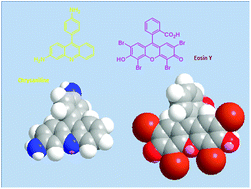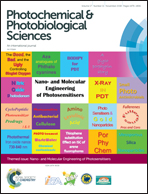Synthetic, small-molecule photoantimicrobials – a realistic approach
Abstract
The search for suitable, low-molecular weight photoantimicrobials for use in infection control has strong foundations in conventional antiseptic research from the early-mid 20th Century. Many examples of dyes exist having conventional antimicrobial activity among the azine, acridine and triphenylmethane families which have since also been found to exhibit photosensitising capabilities. The prior employment of these examples in human antisepsis provides a practical basis in terms of low host toxicity, while extant structure–activity relationships for conventional antimicrobial activity can support the development of similar relationships for photoactivated cell killing. The range of chromophores covered allows progress to be made both in topical and deeper, fluid-involved infections.

- This article is part of the themed collection: Nano- and Molecular Engineering of Photosensitisers


 Please wait while we load your content...
Please wait while we load your content...